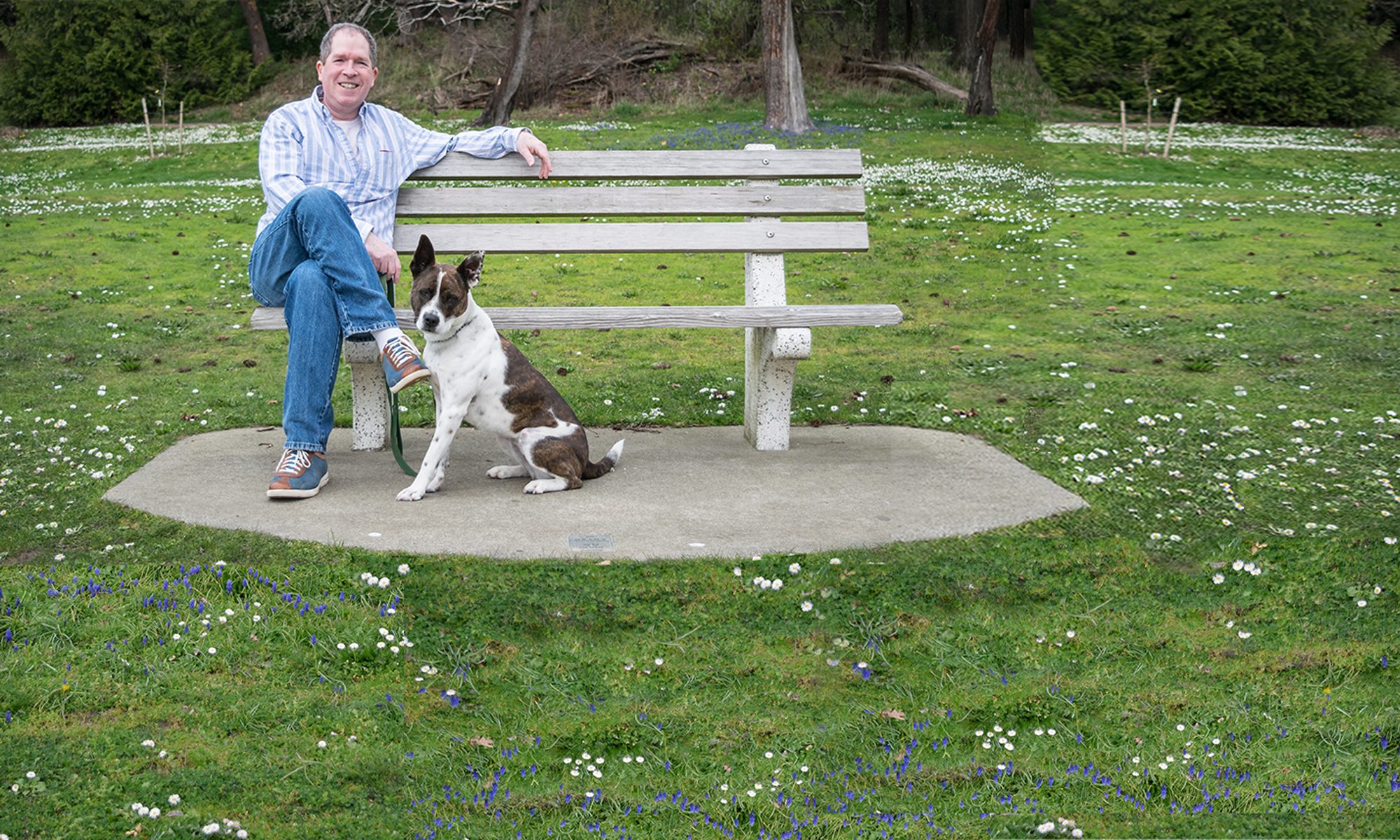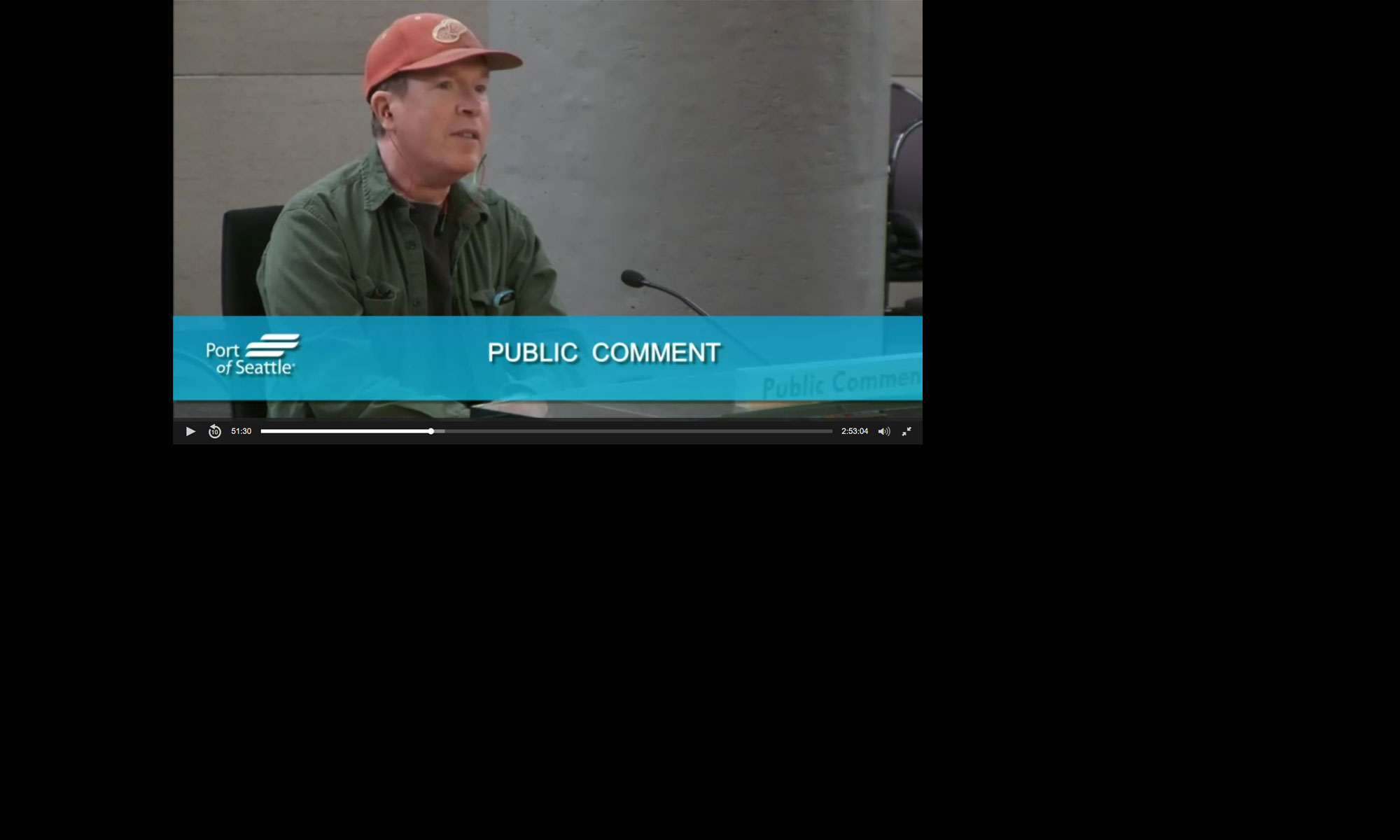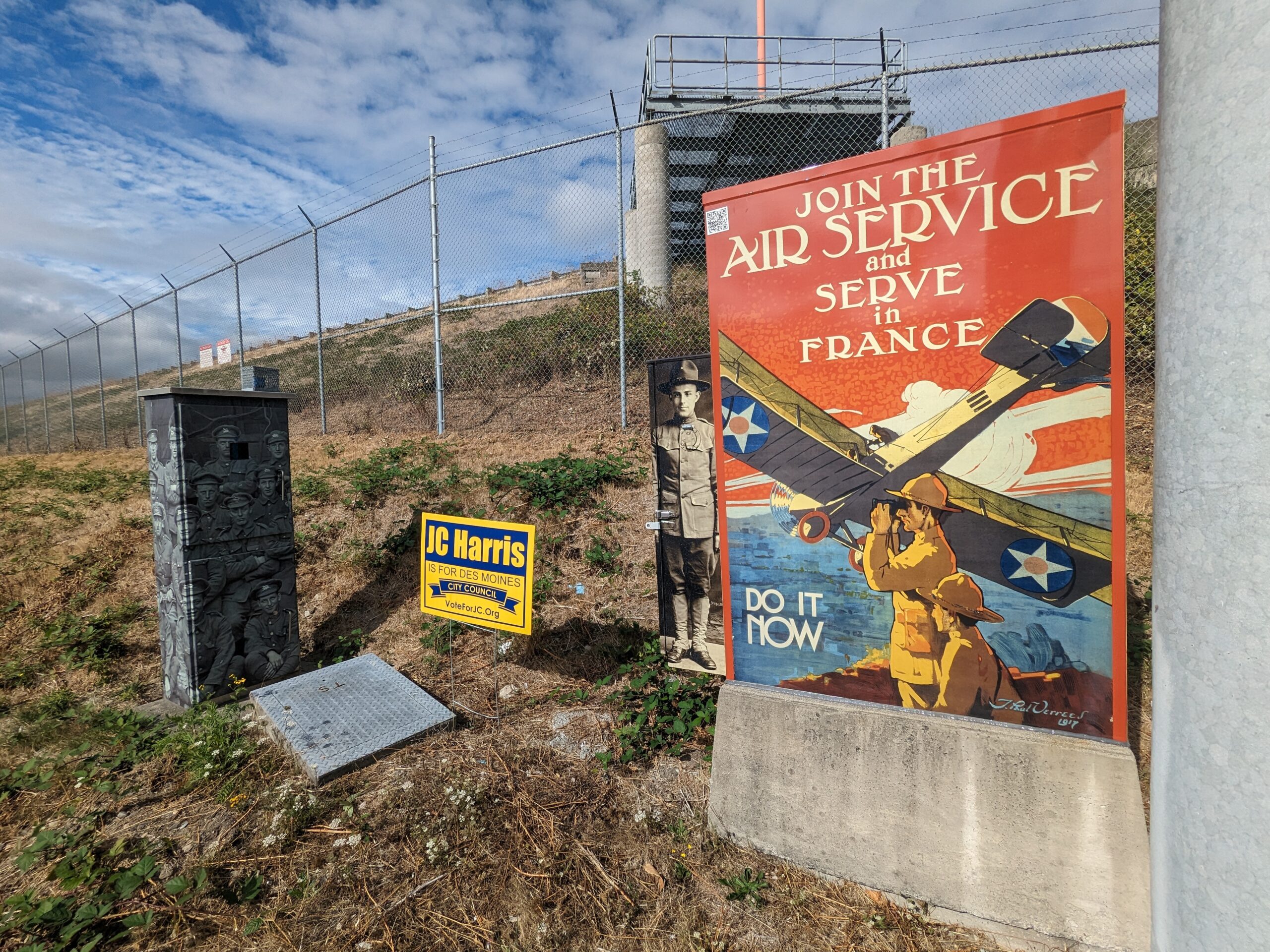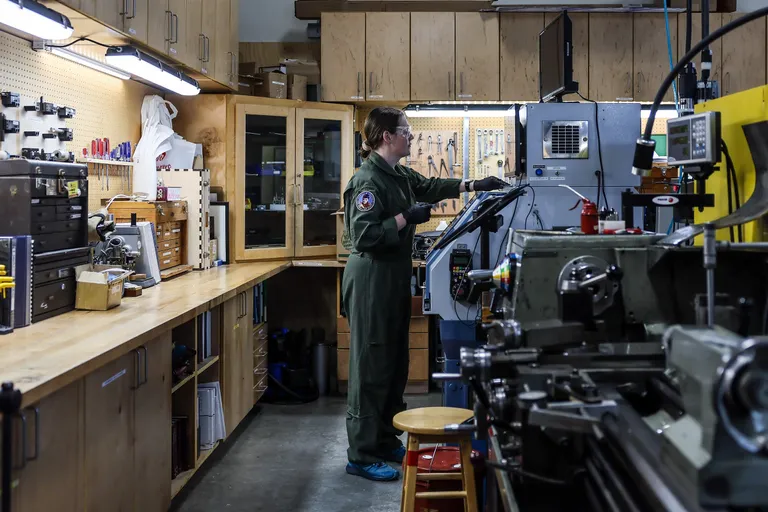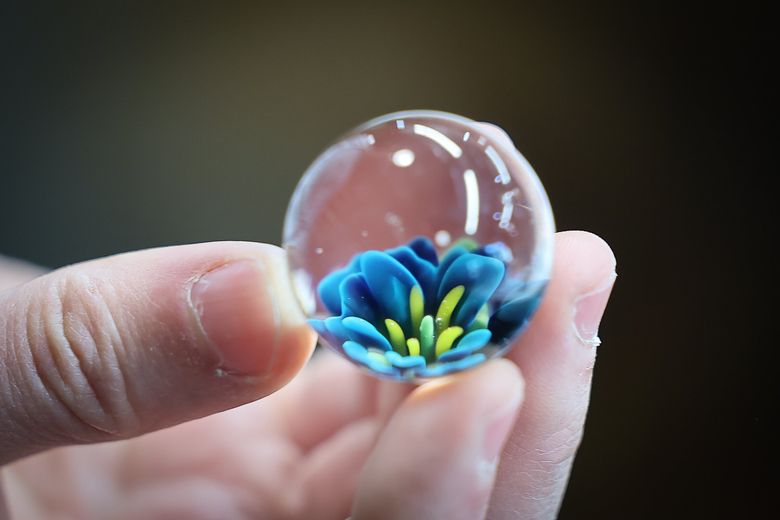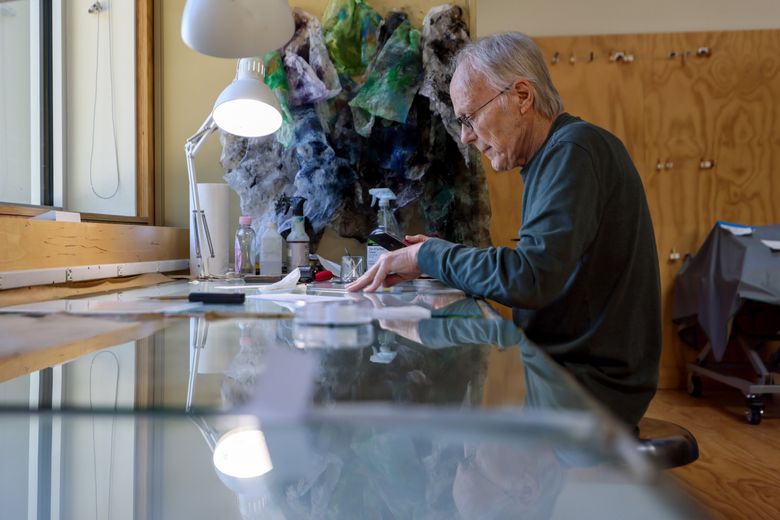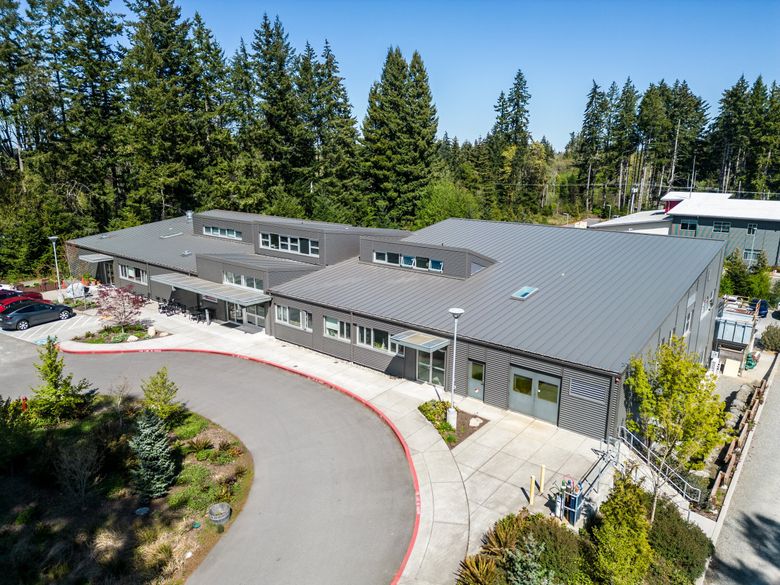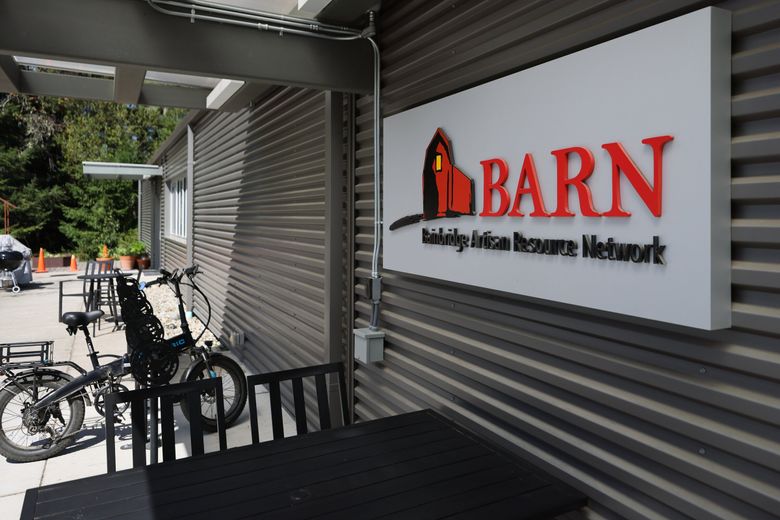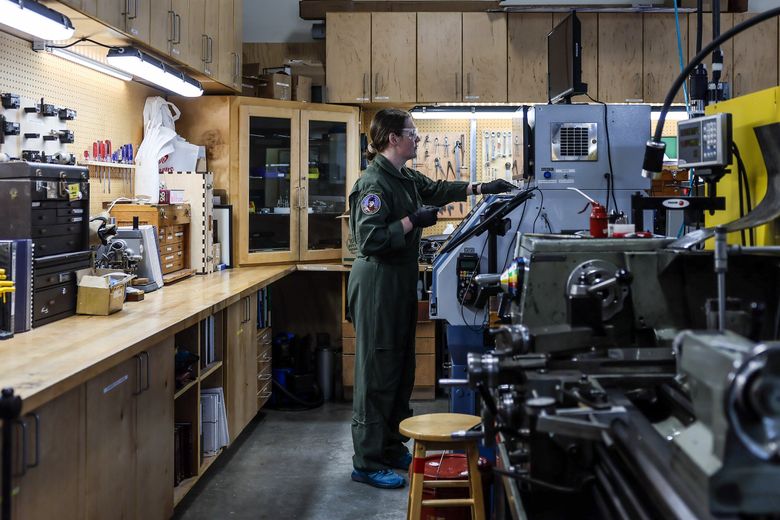BAINBRIDGE ISLAND — Using a propane oxygen torch that emits a footlong flame, Grae Drake creates swirling patterns and delicate flowers from molten glass heated to 4,000 degrees.
“I really love making marbles,” he said of the colorful orbs he fashions from glass rods, which are about the circumference of a forefinger and thumb pinched into a circle.
“There’s no functionality — they’re just pure fun,” said Drake, the father of two young children. “I like to hide them around Bainbridge, tuck ‘em into places I think kids will find them.”
Playing with ideas, materials and professional-grade equipment is central to the ethos of the Bainbridge Artisan Resource Network, better known as BARN to its 1,164 members. Before Drake became executive director of the nonprofit “makerspace and learning place” last year, he was a member and volunteer in BARN’s glass studio, which is equipped with eight workstations, a kiln and a large collection of ceramic molds for making fused-glass projects.
Housed in a 25,000-square-foot building designed by a renowned Seattle architect, BARN sits on 1.8 acres of a former Christmas tree farm, an easy 15-minute drive from the Bainbridge Island ferry terminal. The facility is 10 times the size of the original BARN, started a decade ago by a group of island artisans who quickly collected “more creatives from more disciplines” as word spread about their effort to establish a shared space to make, build and create, said Carolyn Goodwin, BARN’s marketing director.
“They started looking around for a place and came to the realization a place didn’t exist yet,” she said of BARN’s founders, who purchased the current site in 2013. “If they wanted to do it right, they would have to build it. And we had to have the best space and the best equipment.”
Divided into 10 studios, BARN offers spaces for wood and glassworkers, jewelry and book makers, printers, metal fabricators, weavers, writers, welders, podcasters and cooks. There’s also an electronics and technical arts studio, outfitted with laser cutters, 3D printers and scanners.
In addition to a usual slate of workshops and summer youth camps, visitors come from all over the country to attend weeklong classes taught by guest instructors. A June workshop with nationally known fiber artist Sue Spargo, who lives in Ohio, has already filled up, and people are inquiring about spots in an August class led by Ana Lisa Hedstrom, a California woman credited with bringing a Japanese dying technique called “shibori” to the U.S.
BARN hasn’t raised its membership fees — $35 a month for individuals, $55 a month for households, with discounts for students and veterans — since opening its current location in 2017. Non-members are also welcome to use the studio spaces for $20 a visit, though they may need to complete a safety orientation before using BARN’s machines and tools.
“We want to keep prices as accessible as possible,” said Drake, who estimated 60% of BARN’s users live on the island and 20% are from the greater Kitsap County area, with the remainder coming from farther afield.
Membership fees and class tuition make up two-thirds of BARN’s $1.7 million operating budget, and the rest comes from donations. The organization’s 11 paid employees are in the planning stages for their main fundraising event, “Night At Barn,” on Oct. 14, the first to be held since the COVID-19 pandemic hit. Several hundred people are also expected to attend BARN’s annual bazaar Nov. 18, when members will offer their creations for sale.
With an eye to the future, BARN entered a purchase agreement to buy a 1.8-acre parcel adjacent to its current property in 2021 and has raised $220,000 of the $800,000 sale price. The organization will need to raise another $7.5 million to build out and equip what’s being envisioned as an expanded campus, with housing for artists-in-residence and studios for painters, glassblowers and ceramic artists — though the exact uses are still being decided.
“We’d like to have an integrated campus because we don’t want to lose the connection and serendipity of everyone connecting in a common space,” Drake said.
‘Impressive’ craftsmanship in collaborative space
Tom Coultas’ grandparents moved from Minnesota to Bainbridge Island in 1942, and a decade later, purchased a 20-acre strawberry farm, where they grew vegetables and raised Angus cattle.
Coultas’ father and uncle later planted fir trees on several acres of the property, selling their first Christmas trees in 1986. By the time the family sold their last trees leading up to Christmas 2020, three generations had turned annual visits to Grandma’s Trees into a family tradition.
“My dad really enjoyed that aspect of it, so I think it was a sentimental thing more than anything to keep it going,” Coultas, 51, of Kingston, said of his late father, also named Tom Coultas.
In the early 1990s, Coultas’ father started work to get the land re-zoned for light manufacturing and brought in underground utilities for what would become a business park. That work paved the way for the future construction of BARN, which shares a driveway with an old farmhouse and the winery, distillery, gym, propane-heater manufacturer and cast-bronze sculptor that comprise the industrial complex.
“Even though the property has moved on from the Coultas name, we’re so proud of what it is,” Coultas said of BARN. “I think it’s a real gem for Bainbridge and the surrounding communities. … At BARN, they’re not just building, like, bookshelves — the craftsmanship and the talent there is really impressive” and attracts people “who are very accomplished” in their chosen medium.
Also impressive is the building itself. BARN was loosely fashioned after old boat-building barns and features many large windows that wash work areas in natural light, said architect Johnpaul Jones of the Seattle firm, Jones & Jones Architects and Landscape Architects.
“I like the aesthetics of it, I like the modernness of it, yet it has the quality of those boat barns and it has the softness of the wood,” said Jones, 81. “I think it’s a good thing. Very utilitarian — that was the idea.”
Clad in metal siding, the interior has an industrial feel, with exposed concrete, metal trusses, duct work and pipes. Wooden floors, wainscoting-like wall panels, and 1,000 custom cabinets built by volunteer woodworkers add warmth to the two-story building, whose lower level is concealed from the front due to the property’s natural slope on its east side. A common area, which doubles as exhibit space, serves as a central hub between the commercial kitchen and studios at the building’s north and south ends.
BARN’s metal and work shops were intentionally sited at the building’s south end, farthest from a housing development to the north to buffer neighbors from the sounds of power tools. And all the hallways are extra wide — not only to accommodate large projects and machinery but to also encourage the informal collaboration that happens when people run into each other as they move through the space, Jones said.
Outside, BARN members plant, tend and harvest three gardens containing herbs for the kitchen, flowers like indigo and marigold for the dye shop, and reeds and grasses for basket weaving.
Jones has already signed on to design BARN’s expansion, which he thinks could involve two or three buildings connected with covered walkways — possibly including some with “living roofs” of flowers and plants.
“I think they’re working hard to determine what are the activities that would be attractive to the Bainbridge community,” he said.
Bainbridge’s maker ethos
David Hays and his wife, Joan, a silversmith, moved from Sammamish to Bainbridge roughly four years ago, and a friend urged them to check out BARN.
“I’ve always had my own wood and metal shops,” and his wife had her own workspace, too, he said. “BARN let us shrink because we didn’t need space for shops.”
Hays is now the lead volunteer in BARN’s metal shop, where he’s built a 3D printer, electric controls to open and close clerestory windows set high in BARN’s walls, and blast gates and controllers for the woodshop’s ventilation system. He’s also fixed grinders in the glass studio, repaired looms in the fiber studio and fashioned replacement parts for the metal shop’s machinery, some of which dates to the 1930s.
“We fix a lot of stuff in here,” he said. “Most everything we do in here we model in 3D — all the holes are located and sized, then we can make that piece no problem.”
On a nearby bench, Eli Backer — who grew up on Bainbridge, moved away for grad school and returned last summer — worked on a polycarbonate yo-yo for a demonstration to teach others how to use the shop’s mill and lathe.
“The island has changed a lot since I grew up,” said Backer, 30. The people who moved to Bainbridge a few decades ago “were pretty scrappy,” and without access to big box stores or Amazon deliveries, learned to make things they couldn’t readily buy.
“I think that ethos continues,” Backer said. “That undercurrent is still here.”
Down the hall in the jewelry studio, Sarah Jones, a professional jeweler and one of BARN’s founders, quipped, “I volunteer for tools,” like a $3,000 cutter she’d never be able to afford on her own.
One of Jones’ newest students is Mara Krieps, who commutes from Redmond on the weekends in her camper van and has taken printmaking and writing classes since retiring in March.
“This place is singular to my knowledge. There’s no other place that offers this breadth of studios and the newest and best equipment,” said Krieps, 59. “The generosity and kindness of the people I’ve met here makes me want to keep coming back.”
